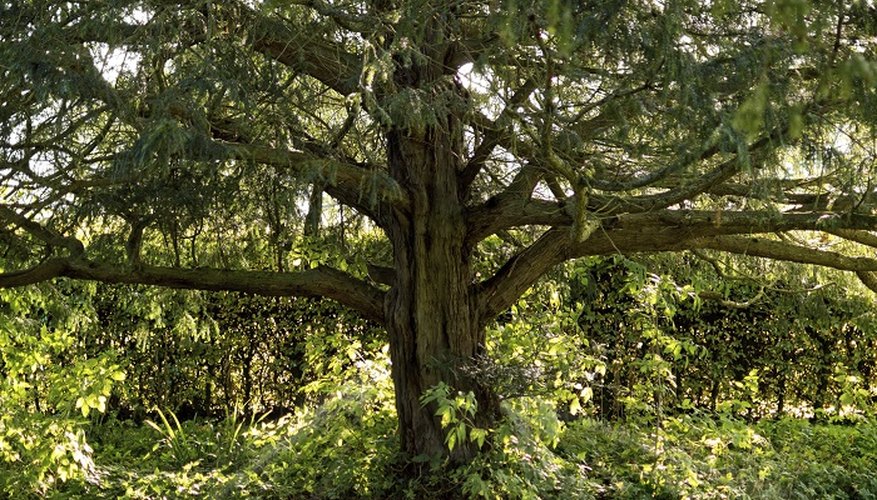Yew, or Taxus baccata, occurs naturally across much of Europe, Asia and the Middle East. Growing to 18 metres (60 feet) in height, yew is a medium-sized evergreen tree with a shrubby shape made up of dark-green, needle-like foliage and a summer display of small red berries. Yew trees grow well in the UK and many people choose to propagate yews at home for large landscape plantings. Propagating yew trees from seed is a simple task, but due to the low viability of the seeds and the protracted germination period, it may take several attempts to achieve success.
- Yew, or Taxus baccata, occurs naturally across much of Europe, Asia and the Middle East.
Put on gloves. Harvest a dozen or so ripe yew berries in late summer once they turn glossy and bright red. Gather them in a wire mesh colander.
Place the colander in a bucket. Mash the yew berries against the sides of the colander to work the seeds free. Run water over the berries and seeds using a garden hose.
Dump the contents of the colander into the bucket of water. Scoop out the floating berry flesh using your gloved hand. Pour the water through the colander to collect the seeds. Spread the yew seeds across a paper towel to dry while the planting pots are prepared.
- Place the colander in a bucket.
- Pour the water through the colander to collect the seeds.
Combine equal parts compost and coarse sand to create a good rooting mix for the yew seeds. Fill several 25 cm (10 inch) plastic pots with the compost and sand mixture. Make one pot for each yew seed.
Water each pot to a depth of 12.5 cm (5 inches) using a garden hose. Allow the compost and sand mixture to drain for a few minutes before planting the yew seeds.
- Combine equal parts compost and coarse sand to create a good rooting mix for the yew seeds.
- Allow the compost and sand mixture to drain for a few minutes before planting the yew seeds.
Press the yew seeds into the surface of the soil until most of the seed is buried but the top is visible. Sprinkle a light layer of sand across the top of the seed to insulate it while still allowing sunlight to reach it. Replace the sand covering as needed, if it becomes dislodged during watering.
Place the potted yew seeds into a cold frame or along an east-facing wall where they will receive some protection from the elements. Mist the seeds to a depth of 2.5 cm (1 inch) using a garden hose with an adjustable nozzle whenever the soil feels dry just below the surface. Do not allow the seeds to dry out or sit in soggy soil.
- Place the potted yew seeds into a cold frame or along an east-facing wall where they will receive some protection from the elements.
Open the cold frame slightly during the winter to allow for evaporation, good air circulation and exposure to chilly temperatures, which are required for proper germination of yew seeds. Continue watering.
Check the seeds occasionally for signs of germination, but it may take two winters for them to sprout.
Remove the pots from the cold frame once they sprout and develop several sets of true leaves. Place the pots in a spot with light shade. Mist the soil and seedlings with the garden hose and adjustable nozzle to keep the foliage from drying out.
Plant the saplings in a permanent bed with good drainage and partial sun exposure once they reach 12.5 cm (5 inches) in height. Delay permanent planting until the yew trees have developed a good root system and are 25 cm (10 inches) in height.
WARNING
Yew foliage and seeds are very toxic to humans; wear gloves when handling them.
